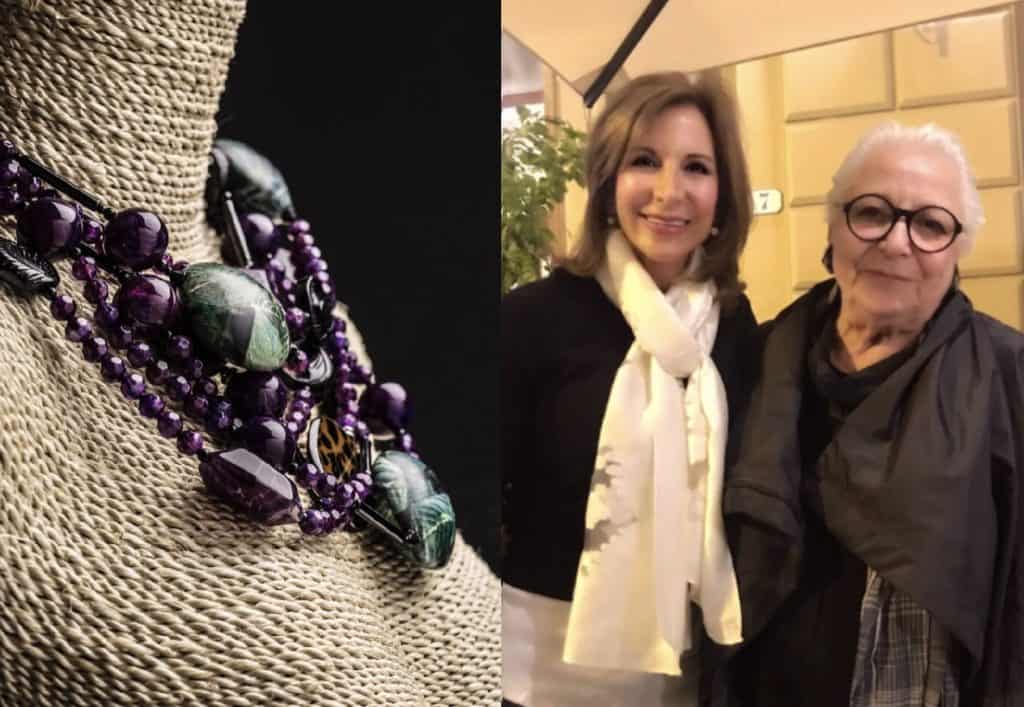
Just how talented is German-born, Milan-based designer Peter Langner?
He had no sooner begun his studies at the École de la Chambre Syndicale de la Couture Parisienne in Paris than the school’s director asked the 24 year old to design her daughter’s wedding dress as well as what she would wear for the occasion.
It was a harbinger of things to come, as his bridal brand is a striking presence in 20 countries across Europe, Asia and North America. His uniquely beautiful evening wear caught our eye at Mary Jane Denzer as well. Specifically– the sculpted, architectural way Langner drapes sustainable fabrics, so that lines are always fluid and dynamic. Details are elegant flourishes, nothing is ever overwrought.
The pink and yellow abstract floral gown above, crystallizes every aspect of the Langner aesthetic, as the jacquard fabric zigs left from one shoulder then zags right to the drapery and slit. Langner honed these skills in the houses of Christian Dior, Emanuel Ungaro, Guy LaRoche and Christian Lacroix. In 1991, Langner went out on his own, opening an atelier in Rome. In 2015, he relocated his team to Milan, where they currently execute and sell his designs.
He is quick to note that nothing he has accomplished happens without a team that works with suppliers, seeks new materials and techniques and makes its own embroideries.
“One of my greatest fortunes,” he says at peterlangner.com, “was finding my amazing staff. They believed and saw where I wanted to go. They stood and still stand next to me beyond benefits and compensation. The passion we share is for sure the greatest help I could ever find.”
Peter Langner has an eveningwear trunk show at Mary Jane Denzer – 7 Renaissance Square in White Plains — Feb. 16 through 24. 914-328-0330
Tags: Peter Langner, Mary Jane Denzer, Chambre Syndicale de la Couture Parisienne, Paris, Germany, Rome, Milan, Christian Dior, Emanuel Ungaro, Guy LaRoche, Christian Lacroix, drapery, embroidery, handkerchief bow, sky palette, minis, ruffles, high-low, jacquard, mikado,




